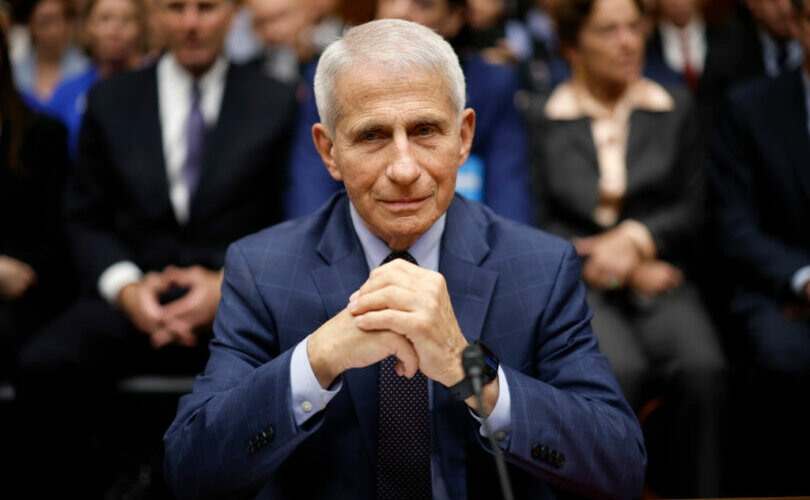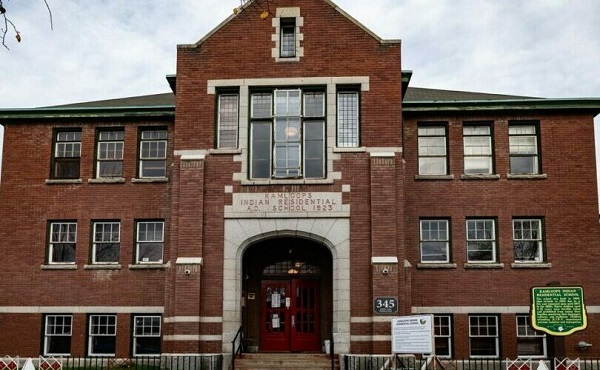MAiD
People with disabilities are vastly overrepresented in Canada’s latest assisted suicide figures

From LifeSiteNews
By Alex Schadenberg of Euthanasia Prevention Coalition
In 2023, Canada recorded over 15,300 euthanasia deaths, with disabilities, poverty, and loneliness driving decisions. Assisted suicide represented 4.7 percent of all deaths in Canada last year.
On February 6, 2024, after obtaining the euthanasia data from Alberta, Ontario, and Québec, the Euthanasia Prevention Coalition published an article stating that there were approximately 15,300 euthanasia (MAiD) deaths in Canada in 2023.
On July 8, 2024 we published an article with links to the euthanasia data from Alberta, British Columbia, Manitoba, Nova Scotia, Ontario, and Québec. We again predicted that there were about 15,300 euthanasia deaths in 2023.
READ: Canadian seniors say they were offered euthanasia when faced with increased hospice costs
On December 11, 2024, Canada’s Ministry of Health released the Fifth Annual Report on Medical Assistance in Dying which indicates that there were 15,343 reported euthanasia deaths representing 4.7 percent of all deaths in 2023.
.jpg?resize=320%2C267&ssl=1)
Why did Canada’s Ministry of Health wait until December 2024 to release the 2023 euthanasia data when the report essentially concerns numbers and data while lacking information on the actual reason for people wanting to be killed by euthanasia?
Interesting data in the report:
- Of the 15,343 reported euthanasia deaths: 95.9 percent were Track 1 deaths (the person was deemed to have a terminal condition); 4.1 percent were Track 2 deaths (the person was deemed as not having a terminal condition).
- People with disabilities accounted for 33.5 percent of the Track 1 euthanasia deaths and 58.3 percent of the Track 2 euthanasia deaths. In 2022, 27 percent of Canadians were people with one or more disabilities. People with disabilities are over-represented in Canada’s euthanasia statistics.
- 95.8 percent of those who died by euthanasia were Caucasian (White) while fewer than 1 percent were First Nations people. In 2022, 69.8 percent of Canadians euthanized were Caucasian and 5 percent were First Nations people.
What is happening in British Columbia, Ontario and Québec?
When analyzing the Fifth Annual Report we question, “What makes British Columbia, Ontario and Québec different than the rest of Canada?” In 2023, euthanasia deaths increased by 36.5 percent in Québec, 30.3 percent in Ontario, and 18 percent in British Columbia. When examining the data from the other seven provinces, the next highest rate of increase was Alberta with a 6.4 percent increase in euthanasia deaths.
Québec has the highest euthanasia rate with 5601 reported euthanasia deaths – this represents 7.3 percent of all deaths and 36.5 percent of all Canadian euthanasia deaths. Canada’s 2021 Census indicated that 23 percent of Canadians live in Québec.
We question the accuracy of the Québec euthanasia data. CBC Radio Canada reported on March 9, 2024, that the Québec government had reported that there were 5,686 reported euthanasia deaths in 2023, but the Fifth Annual report states 5,601.
The analysis of the Québec Commission on End-of-Life Care Eighth Annual Report (April 1, 2022 – March 30, 2023) by Amy Hasbrouck indicated that there were 190 euthanasia deaths that may not have been reported by the doctor or nurse practitioner who carried out the death. 190 unreported euthanasia deaths is serious.
Euthanasia for frailty was listed as a reason in 1,392 deaths, representing more than 9 percent of all euthanasia deaths. In 92 euthanasia deaths, frailty was listed as the only reason.
Euthanasia for chronic pain was listed as a reason in 933 deaths, with 23 of the deaths listing chronic pain as the only reason.
Euthanasia for dementia was listed as a reason in 241 deaths, with 106 of those deaths listing dementia as the only reason.
Similar to other jurisdictions, the reason for seeking euthanasia was highly oriented to the person’s social condition.
- 96 percent listed “Loss of ability to engage in meaningful activities,”
- 87 percent listed “Loss of ability to perform activities of daily living,”
- 70 percent listed “Loss of dignity,”
- 55 percent listed “Inadequate pain control.”
It is important to note that loneliness and isolation was listed in more than 21 percent of all euthanasia deaths representing more than 3,200 people.
People with disabilities should be concerned that more than 50 percent of those who died identified “loss of independence” and almost 50 percent listed being a perceived burden on family, friends, or care givers.
People with disabilities should also be concerned that “other conditions” was the highest identified factor for euthanasia. For people with disabilities, 46.2 percent of the Track 1 deaths were based on “other conditions” and 62.9 percent of the Track 2 deaths were based on “other conditions.” “Other conditions” is not further defined and indicates a serious concern with discrimination of people with disabilities.
We recognize another concern related to the difference in income levels for Track 1 and Track 2 euthanasia deaths. People who died by Track 2 euthanasia were more likely to have a lower income than the Track 1 deaths.
More analysis of the Fifth Annual Report needs to be done. The report includes more information than previous years’ reports but it does not examine why people are asking for euthanasia nor does it uncover deaths that may be outside of the parameters of the law.
In October 2024 the chief coroner of Ontario released a report from the Ontario MAiD Death Review Committee reporting that between 2018 and 2023 there were euthanasia deaths driven by homelessness, fear, and isolation and that poor people are at risk of coercion, indicating that Canadians with disabilities are needlessly dying by euthanasia. The data from the Ontario Death Review report indicates that in the reported time period there were at least 428 non-compliant euthanasia deaths and 25 percent of the euthanasia providers violated the law.
The Ontario MAiD Death Review report has three parts (Part 3) (Part 2) (Part 1).
The federal government needs to do a complete review of Canada’s experience with euthanasia.
Reprinted with permission from the Euthanasia Prevention Coalition.
MAiD
Disability rights panel calls out Canada, US states pushing euthanasia on sick patients

From LifeSiteNews
Physician-assisted suicide programs in the US and Canada are discriminating against patients with serious medical conditions according to a panel discussion at the Religion News Association.
Physician-assisted suicide programs in the United States and Canada are discriminating against patients with serious medical conditions even when their cases are not terminal, in many cases pushing to end their lives for financial reasons rather than medical.
Catholic News Agency reported that a panel of disability-rights advocates recently examined the landscape of the issue during the Religion News Association’s 2025 annual conference. During the panel, Patients Rights Action Fund (PRAF) executive director Matt Vallière accused state euthanasia programs of discriminating against patients with life-threatening conditions in violation of the Americans with Disabilities Act, noting that when a state will “will pay for every instance of assisted suicide” but not palliative care, “I don’t call that autonomy, I call that eugenics.”
Inclusion Canada CEO Krista Carr, meanwhile, discussed her organization’s lawsuit against the expansion of Canada’s medical assistance in dying (MAID) program to “people with an incurable disease or disability who are not dying, so they’re not at end of life and their death is not reasonably foreseeable.”
More astonishingly, she added, this “funded right” to lethal injection is slated to be expanded to mental illness in 2027.
“By setting out a timeline of three years, it’s an indication that the systems need to move towards readiness in two years. There’s the opportunity to do another review, and to assess the readiness of the system through a parliamentary process,” Health Minister Mark Holland said in February of the move, which Dying with Dignity Canada presents as a matter of “equality” for “those whose sole underlying condition is a mental illness.”
“It’s being called a choice,” but “it’s not a choice,” Carr said. Rather, these programs are pushing the “choice” on patients in “a desperate situation where they can’t get the support they need.”
As LifeSiteNews recently covered, the “most recent reports show that (medical assistance in dying) is the sixth highest cause of death in Canada. However, it was not listed as such in Statistics Canada’s top 10 leading causes of death from 2019 to 2022.”
In America, nine states plus the District of Columbia currently allow assisted suicide.
Support is available to talk those struggling with suicidal thoughts out of ending their lives. The American Suicide & Crisis Lifeline and the Canadian Suicide Crisis Helpline can both be reached by calling or texting 988.
MacDonald Laurier Institute
Rushing to death in Canada’s MAiD regime

 By Ramona Coelho for Inside Policy
By Ramona Coelho for Inside Policy
Canada legalized Medical Assistance in Dying (MAiD) in 2016, encompassing both euthanasia and assisted suicide. Initially limited to those nearing their natural death, eligibility expanded in 2021 to individuals with physical disabilities, with eligibility for individuals with mental illness in 2027. Parliamentary recommendations include MAiD for children. A recent federal consultation explored extending MAiD to those who lack capacity via advance directives, an approach Quebec has already adopted, despite its criminal status under federal law.
Despite its compassionate framing, investigative journalists and government reports reveal troubling patterns where inadequate exploration of reversible suffering – such as lack of access to medical treatments, poverty, loneliness, and feelings of being a burden – have driven Canadians to choose death. As described by our former Disability Inclusion Minister, Canada’s system at times makes it easier to access MAiD than to receive basic care like a wheelchair. With over 60,000 MAiD cases by the end of 2023, the evidence raises grave concerns about Canada’s MAiD regime.
I am a member of Ontario’s MAiD Death Review Committee (MDRC). Last year, the Chief Coroner released MDRC reports, and a new set of reports has just been published. The first report released by the Office of the Chief Coroner, Waivers of Final Consent, examines how individuals in Track 1 (reasonably foreseeable natural death) can sign waivers to have their lives ended even if they lose the capacity to consent by the scheduled date of MAiD. The second, Navigating Complex Issues within Same Day and Next Day MAiD Provisions, includes cases where MAiD was provided on the same day or the day after it was requested. These reports raise questions about whether proper assessments, thorough exploration of suffering, and informed consent were consistently practised by MAiD clinicians. While MDRC members hold diverse views, here is my take.
Rushing to death, Ignoring Reversible Causes of Suffering
In the same-day or next-day MAiD report, Mrs. B, in her 80s, after complications from surgery, opted for palliative care, leading to discharge home. She later requested a MAiD assessment, but her assessor noted she preferred palliative care based on personal and religious values. The next day, her spouse, struggling with caregiver burnout, took her to the emergency department, but she was discharged home. When a request for hospice palliative care was denied, her spouse contacted the provincial MAiD coordination service for an urgent assessment. A new assessor deemed her eligible for MAiD, despite concerns from the first practitioner, who questioned the new assessor on the urgency, the sudden shift in patient perspective, and the influence of caregiver burnout. The initial assessor requested an opportunity for re-evaluation, but this was denied, with the second assessor deeming it urgent. That evening, a third MAiD practitioner was brought in, and Mrs. B underwent MAiD that night.
The focus should have been on ensuring adequate palliative care and support for Mrs. B and her spouse. Hospice and palliative care teams should have been urgently re-engaged, given the severity of the situation. Additionally, the MAiD provider expedited the process despite the first assessor’s and Mrs. B’s concerns without fully considering the impact of her spouse’s burnout.
The report also has worrying trends suggesting that local medical cultures—rather than patient choice—could be influencing rushed MAiD. Geographic clustering, particularly in Western Ontario, where same-day and next-day MAiD deaths occur most frequently, raises concerns that some MAiD providers may be predisposed to rapidly approve patients for quick death rather than ensuring patients have access to adequate care or exploring if suffering is remediable. This highlights a worrying trend where the speed of the MAiD provision is prioritized over patient-centered care and ethical safeguards.
MAiD without Free and Informed Choice
Consent has been central to Canadians’ acceptance of the legalization of euthanasia and assisted suicide. However, some cases in these reports point to concerns already raised by clinicians: the lack of thorough capacity assessments and concerns that individuals may not have freely chosen MAiD.
In the waiver of final consent report, Mr. B, a man with Alzheimer’s, had been approved for MAiD with such a waiver. However, by the scheduled provision date, his spouse reported increased confusion. Upon arrival, the MAiD provider noted that Mr. B no longer recognized them and so chose not to engage him in discussion at all. Without any verbal interaction to determine his current wishes or understanding, Mr. B’s life was ended.
In the same-day or next-day MAiD report, Mr. C, diagnosed with metastatic cancer, initially expressed interest in MAiD but then experienced cognitive decline and became delirious. He was sedated for pain management. Despite the treating team confirming that capacity was no longer present, a MAiD practitioner arrived and withheld sedation, attempting to rouse him. It was documented that the patient mouthed “yes” and nodded and blinked in response to questions. Based on this interaction, the MAiD provider deemed the patient to have capacity. The MAiD practitioner then facilitated a virtual second assessment, and MAiD was administered.
These individuals were not given genuine opportunities to confirm whether they wished to die. Instead, their past wishes or inquiries were prioritized, raising concerns about ensuring free and informed consent for MAiD. As early as 2020, the Chief Coroner of Ontario identified cases where patients received MAiD without well-documented capacity assessments, even though their medical records suggested they lacked capacity. Further, when Dr. Leonie Herx, past president of the Canadian Society of Palliative Medicine, testified before Parliament about MAiD frequently occurring without capacity, an MP dismissed her, advising Parliament to be cautious about considering seriously evidence under parliamentary immunities that amounted to malpractice allegations, which should be handled by the appropriate regulatory bodies or police. These dismissive comments stand in stark contrast with the gravity of assessing financial capacity, and yet the magnitude is greater when ending life. By way of comparison, for my father, an Ontario-approved capacity expert conducted a rigorous evaluation before declaring him incapable of managing his finances. This included a lengthy interview, collateral history, and review of financial documents—yet no such rigorous capacity assessment is mandated for MAiD.
What is Compassion?
While the federal government has finished its consultation on advance directives for MAiD, experts warn against overlooking the complexities of choosing death based on hypothetical suffering and no lived experience to inform those choices. A substitute decision-maker has to interpret prior wishes, leading to guesswork and ethical dilemmas. These cases highlight how vulnerable individuals, having lost the capacity to consent, may be coerced or unduly influenced to die—whether through financial abuse, caregiver burnout, or other pressures—reminding us that the stakes are high – life and death, no less.
The fundamental expectation of health care should be to rush to care for the patient, providing support through a system that embraces them—not rush them toward death without efforts to mitigate suffering or ensure free and informed consent. If we truly value dignity, we must invest in comprehensive care to prevent patients from being administered speedy death in their most vulnerable moment, turning their worst day into potentially their last.
Dr. Ramona Coelho is a family physician whose practice largely serves marginalised persons in London, Ontario. She is a senior fellow at the Macdonald-Laurier Institute and co-editor of the new book “Unravelling MAiD in Canada” from McGill University Press.
-

 2025 Federal Election1 day ago
2025 Federal Election1 day agoResearchers Link China’s Intelligence and Elite Influence Arms to B.C. Government, Liberal Party, and Trudeau-Appointed Senator
-

 2025 Federal Election2 days ago
2025 Federal Election2 days agoRCMP memo warns of Chinese interference on Canadian university campuses to affect election
-

 COVID-1917 hours ago
COVID-1917 hours agoCDC Vaccine Safety Director May Have Destroyed Records, Says Sen. Ron Johnson
-

 COVID-191 day ago
COVID-191 day agoFauci, top COVID officials have criminal referral requests filed against them in 7 states
-

 2025 Federal Election1 day ago
2025 Federal Election1 day agoCarney needs to cancel gun ban and buyback
-

 2025 Federal Election1 day ago
2025 Federal Election1 day agoPoilievre Announces Plan To Cut Taxes By $100,000 Per Home
-

 Censorship Industrial Complex23 hours ago
Censorship Industrial Complex23 hours agoFormer residential school student refutes ‘genocide’ claims, recalls positive experience
-

 Bjorn Lomborg1 day ago
Bjorn Lomborg1 day agoThe stupidity of Net Zero | Bjorn Lomborg on how climate alarmism leads to economic crisis









